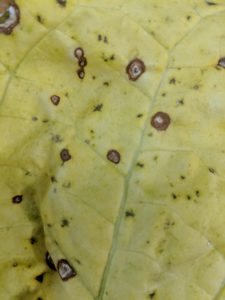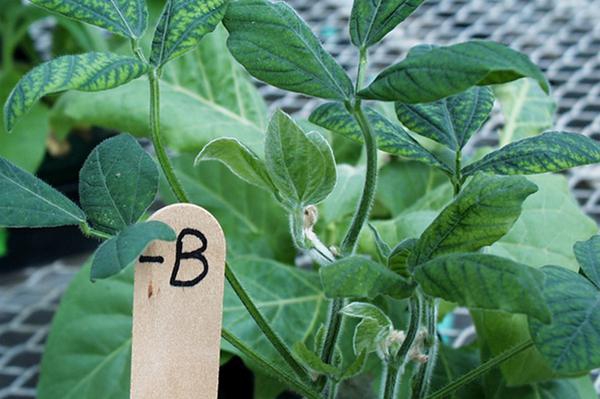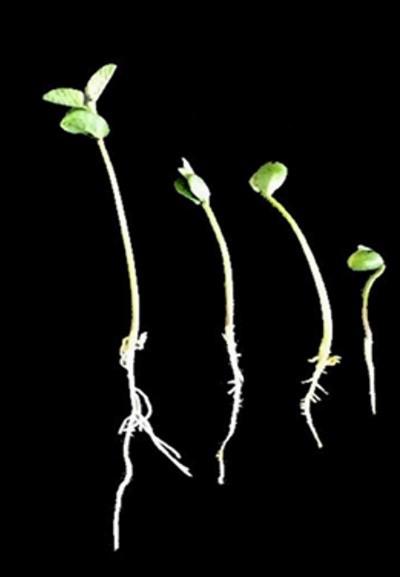Dieback Symptoms in Industrial Hemp
Dieback Symptoms in Hemp Over the last month, dieback symptoms have been widely observed in hemp stands. These symptoms are …


El inglés es el idioma de control de esta página. En la medida en que haya algún conflicto entre la traducción al inglés y la traducción, el inglés prevalece.
Al hacer clic en el enlace de traducción se activa un servicio de traducción gratuito para convertir la página al español. Al igual que con cualquier traducción por Internet, la conversión no es sensible al contexto y puede que no traduzca el texto en su significado original. NC State Extension no garantiza la exactitud del texto traducido. Por favor, tenga en cuenta que algunas aplicaciones y/o servicios pueden no funcionar como se espera cuando se traducen.
Inglês é o idioma de controle desta página. Na medida que haja algum conflito entre o texto original em Inglês e a tradução, o Inglês prevalece.
Ao clicar no link de tradução, um serviço gratuito de tradução será ativado para converter a página para o Português. Como em qualquer tradução pela internet, a conversão não é sensivel ao contexto e pode não ocorrer a tradução para o significado orginal. O serviço de Extensão da Carolina do Norte (NC State Extension) não garante a exatidão do texto traduzido. Por favor, observe que algumas funções ou serviços podem não funcionar como esperado após a tradução.
English is the controlling language of this page. To the extent there is any conflict between the English text and the translation, English controls.
Clicking on the translation link activates a free translation service to convert the page to Spanish. As with any Internet translation, the conversion is not context-sensitive and may not translate the text to its original meaning. NC State Extension does not guarantee the accuracy of the translated text. Please note that some applications and/or services may not function as expected when translated.
Collapse ▲Dieback Symptoms in Hemp Over the last month, dieback symptoms have been widely observed in hemp stands. These symptoms are …

Hemp Leaf Spot Problems North Carolina industrial hemp producers are combatting a leaf spot issue that is caused by Exserohilum …

Root, Crown, and Stem Rot Root, crown, and stem rots are being observed in industrial hemp stands across North Carolina. …

Cercospora leaf spot of cotton (Fig. 1), caused Cercospora gossypina (syn. Mycosphaerella gossypina), has been observed across North Carolina cotton growing …
Third generation thrips flights are now predicted to occur within 14 days at some of our locations, so growers …
This is the second thrips flight and TSWV risk assessment post. Read more about tobacco thrips biology and TSWV transmission. This …
This is the third update on Fusarium Head Blight (FHB) risk in North Carolina in 2019. More information on FHB …

Tomato spotted wilt virus (TSWV) is transmitted by thrips from winter weeds that are host to the virus. Symptoms …
Fusarium Head Blight Fusarium Head Blight (FHB), also known as scab, is caused by several Fusarium spp., particularly F. graminearum in the U.S. The …
Fusarium Head Blight Fusarium head blight of wheat (also known as scab) is one of the most problematic diseases of …

Meloidogyne enterolobii Internal Quarantine from NCDA On Friday, October 5, 2018, the N.C. Department of Agriculture and Consumer Services released a press …
Many of the soybeans in North Carolina are past the critical growth stages for impact by soybean rust, but …
Hurricane Florence has brought damaging rains, winds, and flooding to North Carolina with, in some areas, tobacco still being on the stalk. Continuing …

Environmental conditions this growing season have been conducive for several pathogens in flue-cured tobacco. Frogeye leaf spot (Cercospora nicotianae) has …

Areolate mildew (Ramularia areola syn. Ramularia gossypii) has been confirmed on samples collected from Halifax County, North Carolina. This …
Recently, cotton producers have been concerned with areolate mildew (Ramularia areola syn. Ramularia gossypii) in North Carolina cotton. This …

Soybeans submitted through the Plant Disease and Insect Clinic have been confirmed to have the causal agent of Sudden …
Wheat crops that are flowering now in northeast NC are at moderate risk of scab. Much of the crop there …
For wheat flowering now, scab risk is low across North Carolina due to recent dry weather. Rain predicted for April 23-28 will …
Wheat scab risk is moderate to high for wheat flowering now in coastal NC counties. These include south Columbus, …

Grapevines require 16 essential nutrients for normal growth and development (Table 9.1). Carbon, hydrogen, and …

This guide presents basic facts about seeds, including how they develop, how to store and …

This Soybean Nutrient Deficiency Information factsheet describes the symptoms and management of boron deficiency in …
This Soybean Nutrient Deficiency Information factsheet describes the symptoms and management of zinc deficiency in …

This Soybean Nutrient Deficiency Information factsheet describes the symptoms and management of molybdenum deficiency in …

This Soybean Nutrient Deficiency Information factsheet describes the symptoms and management of aluminum toxicity in …

This Soybean Nutrient Deficiency Information factsheet describes the symptoms and management of sulfur deficiency in …

This Soybean Nutrient Deficiency Information factsheet describes the symptoms and management of magnesium deficiency in …